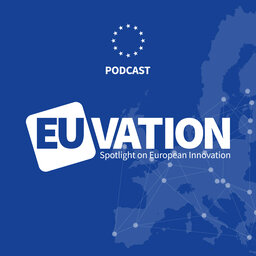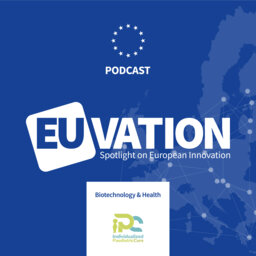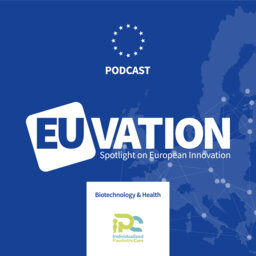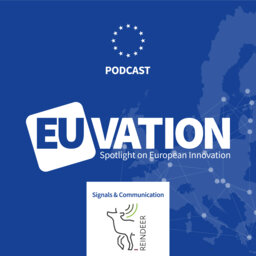ALFA (2) H2020 Project: Advanced Low Flying Aircrafts Detection and Tracking (part two)
We speak with Gilles Prémel-Cabic from THALES Nederland about the ALFA project. We had the opportunity to gather facts in Cacela Velha, Portugal as Gilles and his team assembled to test ALFA components together for the first time. In our discussions we learn a bit about how the system is intended to work and how it has been working so far. We also talk about the future of ALFA: what happens after this demonstration?
The ALFA project has received funding from the European Union's Horizon 2020 research and innovation programme under grant agreement No. 700002.
Powerful collaborations. Cutting edge science and curious minds coming together for a glimpse of the future.
Stay tuned as we look at the latest updates on some of the most promising technology projects.
Welcome once again, I'm your host Peter Balint and this time we again take a closer look at the ALFA h 2020 project. In the first part of this program, we identified ALFA as a project which combines many technologies to be able to detect classify and even predict the landing site of illegal aerial vehicles like drones and low flying small helicopters.
As you can imagine, a tool like this could go a long way in securing the European borders against drug smuggling. F or example the success of this project is due to the unwavering efforts of nine partners from six countries across Europe. Today we are attending a product demonstration. It's a way to bring everyone together to test the various systems as an integrated whole. A proof of concept if you will. Over the next few days project partners will test their wares from a makeshift control center and this is where we caught up with Gilles Prémel-Cabic from Thales in the Netherlands. Let's go inside the Alpha Control Center and talk to Gilles .
Thank you for taking a few moments of your busy schedule here to talk with us a little bit about the ALFA project.
Can you tell us what's the kind of the big idea for ALFA here?
Yeah, ALFA is about protecting European borders and in this project is mainly about countering drug trafficking. So it's a project mainly focused on detection tracking and classification of low flying air targets. And by these targets which mean small target like drones but also smaller helicopters and fixed wing. And next to this main activity of detection tracking classification we also tried to gain knowledge about the intent of those targets so where could they drop off something, where could they land?
So this tells me that currently the radar we use today maybe can't see these things. Is that a problem. Is that the issue?
Yeah. Actually the radars that Guardia Civil or GNR have just reveal on now have in Spain and Portugal as now mainly focusing on on boats at the moment so they're looking more at surface targets. But what we've tried to do here is to cover then the low level air space. So basically under something like 300 meters. So really flying targets.
OK. So ALFA then is basically detection and categorization and maybe a little bit of prediction of where these aircraft will land. So what's happening now? So we're in the southern coast of Portugal for four days doing this pre-demo What do you what what are you testing what are you hoping to achieve here?
OK. We're basically doing two things for what I'm concerned. One of the first thing is integration. We have multiple sensors. We have a radar sensor. We have a passive radio frequency sensor and we have a camera and these sensors are combined and that the data that we can measure with these sensors are fused in what we call a data fusion functionality. And from this data fusion functionality we have those tracks that we can we can follow and we try to put a label on them to basically classify which kind of target it is. And then we do a threat assessment —so we basically look at whether we can say whether this target is there for a good reason or for a wrong reason. And from the moment we have a threat assessment on we can follow these targets try to see where they will land or drop off something.
Okay. So you're developing this technology and when this is working then what happens who chases the bad guy.
Well normally this would would be operated as a real product by one people from Guardia Civil or GNR.
I See, so this technology then gets turned— this is sort of built for the Border Patrol or the police
That's meant for for border control.
And if this is a complete success here for the next four days, what does that look like?
Well once we test the integration, we've done that before and we're repeating it in Portugal, then we also want to collect data. So we have targets of opportunity. Yesterday we saw a jet ski. We can see cars we can see boats these targets that we basically are not following but could be confusing us for further processing we are doing especially for the classification. So this is also very important to know to get to know the environment what kind of targets we can we can see in this kind of environment in order to be able to extract the one that we that an operator would really want to pick up from the environment. So that's the second part of this experiment here in Portugal. So collect data and being able afterwards in the labs to process this data and to improve the overall system performance.
And your specialty here is the classification of objects found right?
Yes I'm very much working on on the radar classification. So from the radar signal we got back scattered from those from this environment and from the targets especially targets moving we are trying to extract interesting characteristics -we call that features in the classification world and from these features we we tried to put a label on each targets basically tell the operator here you are dealing with a ship you're dealing with a car you are dealing with a helicopter or a fixed wing or a drone eventually. And that's basically a work of classification -we want to know what it is. And one important step we did during so project was to discuss with the end user and to know what do you want to know -what kind of classes basically what kind of type of targets you want to be able to recognize. So we discussed different classes that they would be interesting in. And these are helicopters -eventually with a pilot, fixed wing also with a pilot or small drones.
And does the system get smarter? I mean, does it say, Hey "I've seen this before I know this is a drone or I know that's a jet ski."
Exactly, that's what we do in the lab. We basically after collecting data we process it and we train our classifier. So, we try to optimize the performance of the system by extracting the target characteristics we are able to find discriminant features in the radar signals or in the video. So you could think very simply of the size of of an object as a discriminant feature if it's very small could be a drone larger could be a helicopter. But there are many other different features. One of the feature we use is for example the Doppler of those targets but we know from drones helicopters or fixed wings that say have also moving parts which are the propellers or the blades. And these are giving a different Doppler because they are moving at a different speed from the body of those objects. And we call that that micro Doppler and we as you we are using these micro Doppler characteristic which are unique for different types of object in order to be able to classify them. So a bird would have wings moving in a very different manner than a drone would have its propeller moving. And this we can see in the radar signal.
So the project is almost complete, right? It's scheduled to finish up in October. Are you able to now sort of look back a little bit and say yeah, these are the weak links or this is where we had more challenges than what we expected. Can you classify these things?
Yeah.there are very strong things we did and others that we still have work on... to work on one of those are very strong things we did this that we were able which, was not obvious very much at the beginning of the project, we are using surveillance. We are surveying a sector and we have very little time to look at each target and doing classification with such a little time appeared challenging at the beginning of the project but this was finally completed successfully. We are now able to use these very short time to classify each target. That was, well something really difficult or that appeared difficult at the beginning of the project. But this means that we have been concentrating our effort in detecting what we knew from the end user we should be classifying. Now that we've done this step, we've started looking at also what are other objects —what could be confusing our classifier and what could give us a mistake, wrong label on some target? So we've started to look at what can we find in the environment. And this is something we concentrated basically in the second part of the project and we have still some effort to do in there to... basically when you have a car on the road or a fisherman on this ship that we know OK, these are targets that are not important for the end user. So we are now in the process of putting a label also on these targets which are part of the environment which we will see with the radar but we don't want the operator to worry about it.
How close are we to having something that's marketable?
Yeah. So what what we're aiming at is a TRL 7. So we've been testing it in a realistic environment we see that it's working already quite fine. We see some little things that we can improve but basically the classifier is working already as it should. And one thing that's important to mention, we've been performing several iterations to improve classifier so we know also exactly how to do this. And we've chosen some classification technologies as it's really easily adaptable. That means that we can very quickly, and we are speaking in a week or two weeks, we can really quickly adapt things to the classifier and make its performance really good.
Well it's a very interesting project and I wish you success for the rest of the project and hopefully your efforts will be seen in the day to day safety of keeping our borders secure.
Thank you very much. I wish you too .
And thank you for taking some time to talk with us today.
It was a pleasure.
This podcast has been brought to you by Technicon. The ALFA project has received funding from the European Union's Horizon 2020 research and innovation programme under grant agreement. Number 7 0 0 0 0 2.
 EUVATION: Spotlight on European Innovation
EUVATION: Spotlight on European Innovation


